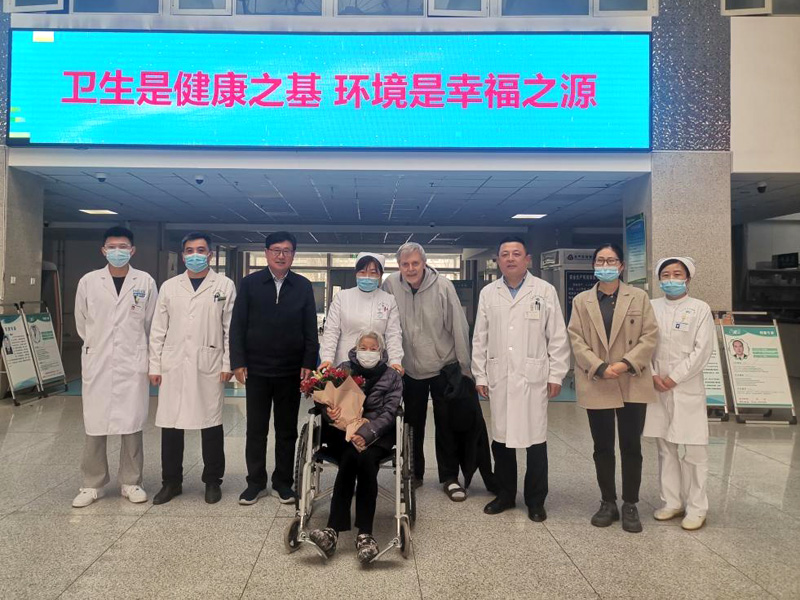
Targeted Drug Delivery for Cancer: A Comprehensive Guide
2025-03-07
содержание
- Understanding Targeted Drug Delivery for Cancer
- Approaches to Targeted Drug Delivery for Cancer
- Carriers Used in Targeted Drug Delivery for Cancer
- Examples of Targeted Drug Delivery for Cancer in Clinical Use
- Challenges and Future Directions
- Table of FDA-Approved Targeted Drug Delivery Systems for Cancer
Targeted drug delivery for cancer aims to improve treatment efficacy and reduce side effects by selectively delivering therapeutic agents to cancer cells while sparing healthy tissues. This approach leverages various carriers and targeting strategies to enhance drug accumulation within the tumor microenvironment, leading to improved patient outcomes.
Understanding Targeted Drug Delivery for Cancer
What is Targeted Drug Delivery for Cancer?
Targeted drug delivery for cancer is a sophisticated method of administering medication directly to cancer cells. Unlike traditional chemotherapy, which affects the entire body, targeted delivery systems focus on delivering drugs specifically to the tumor site. This approach minimizes damage to healthy tissues and reduces the severe side effects often associated with conventional cancer treatments.
Why is Targeted Drug Delivery for Cancer Important?
The primary goal of targeted drug delivery for cancer is to enhance the effectiveness of cancer treatments while reducing the toxic effects on healthy cells. By delivering drugs directly to the tumor, higher concentrations of the therapeutic agent can be achieved at the target site, improving the chances of successful treatment. This also minimizes the systemic exposure to the drug, leading to fewer and less severe side effects for the patient.

Approaches to Targeted Drug Delivery for Cancer
Passive Targeting
Passive targeting relies on the natural characteristics of tumors, such as their leaky vasculature and impaired lymphatic drainage, to allow drugs to accumulate in the tumor microenvironment. Nanoparticles with appropriate size and surface properties can exploit these features to passively target tumors. One example is liposomes which are spherical vesicles composed of lipid bilayers.
Active Targeting
Active targeting involves modifying drug carriers with specific ligands that bind to receptors overexpressed on cancer cells. This interaction facilitates the selective uptake of the drug carrier by cancer cells. Common ligands include antibodies, peptides, and aptamers.
Stimuli-Responsive Targeting
Stimuli-responsive targeting utilizes internal or external stimuli, such as pH, temperature, or light, to trigger drug release at the tumor site. This approach allows for precise control over drug delivery, maximizing therapeutic efficacy while minimizing off-target effects. pH-sensitive nanoparticles, for example, release their drug payload in the acidic environment of the tumor microenvironment.
Carriers Used in Targeted Drug Delivery for Cancer
Nanoparticles
Nanoparticles are widely used as carriers in targeted drug delivery for cancer due to their small size, large surface area, and versatility. They can be made from various materials, including lipids, polymers, and inorganic compounds. Nanoparticles can be engineered to encapsulate drugs, protect them from degradation, and facilitate their targeted delivery to cancer cells. The Shandong Baofa Cancer Research Institute utilizes a variety of nanoparticles in their ongoing research into novel cancer therapies.
Liposomes
Liposomes are spherical vesicles composed of lipid bilayers. They are biocompatible, biodegradable, and can encapsulate both hydrophilic and hydrophobic drugs. Liposomes can be modified with targeting ligands to enhance their selectivity for cancer cells.
Antibody-Drug Conjugates (ADCs)
ADCs are composed of a monoclonal antibody linked to a cytotoxic drug. The antibody selectively binds to cancer cells, delivering the drug directly to the tumor site. This approach combines the specificity of antibodies with the potency of cytotoxic drugs.

Examples of Targeted Drug Delivery for Cancer in Clinical Use
Doxil? (Liposomal Doxorubicin)
Doxil? is a liposomal formulation of doxorubicin, an anthracycline chemotherapy drug. The liposomal encapsulation of doxorubicin prolongs its circulation time and enhances its accumulation in tumors with leaky vasculature. Doxil? is approved for the treatment of ovarian cancer, multiple myeloma, and Kaposi’s sarcoma.
Kadcyla? (Trastuzumab Emtansine)
Kadcyla? is an ADC composed of trastuzumab, a monoclonal antibody that targets HER2, linked to emtansine, a microtubule inhibitor. Kadcyla? is approved for the treatment of HER2-positive metastatic breast cancer. The trastuzumab component of Kadcyla? binds to HER2-positive cancer cells, delivering the emtansine directly to the tumor site.
Challenges and Future Directions
Overcoming Biological Barriers
One of the major challenges in targeted drug delivery for cancer is overcoming biological barriers, such as the blood-brain barrier and the tumor microenvironment. Strategies to overcome these barriers include using smaller nanoparticles, modifying their surface properties, and employing stimuli-responsive targeting.
Improving Targeting Specificity
Improving the specificity of targeted drug delivery systems is crucial to minimize off-target effects and enhance therapeutic efficacy. This can be achieved by developing more selective ligands, optimizing the design of drug carriers, and employing combination therapies.
Personalized Medicine
Personalized medicine approaches hold great promise for improving the effectiveness of targeted drug delivery for cancer. By tailoring treatment strategies to the individual characteristics of each patient and their tumor, it may be possible to optimize drug delivery and enhance treatment outcomes. This might involve analyzing the genetic profile of the tumor to identify specific targets for drug delivery.
Table of FDA-Approved Targeted Drug Delivery Systems for Cancer
| Drug Name | Target | Cancer Type | Mechanism of Action |
|---|---|---|---|
| Doxil? | Tumor Vasculature | Ovarian Cancer, Multiple Myeloma, Kaposi’s Sarcoma | Prolonged circulation, enhanced accumulation in tumors |
| Kadcyla? | HER2 | HER2-Positive Metastatic Breast Cancer | HER2-targeted antibody linked to a microtubule inhibitor |
| Enhertu? | HER2 | HER2-Positive Breast Cancer | HER2-targeted antibody linked to a topoisomerase I inhibitor |
Disclaimer: This article is for informational purposes only and should not be considered as medical advice. Consult with a qualified healthcare professional for diagnosis and treatment of cancer.










